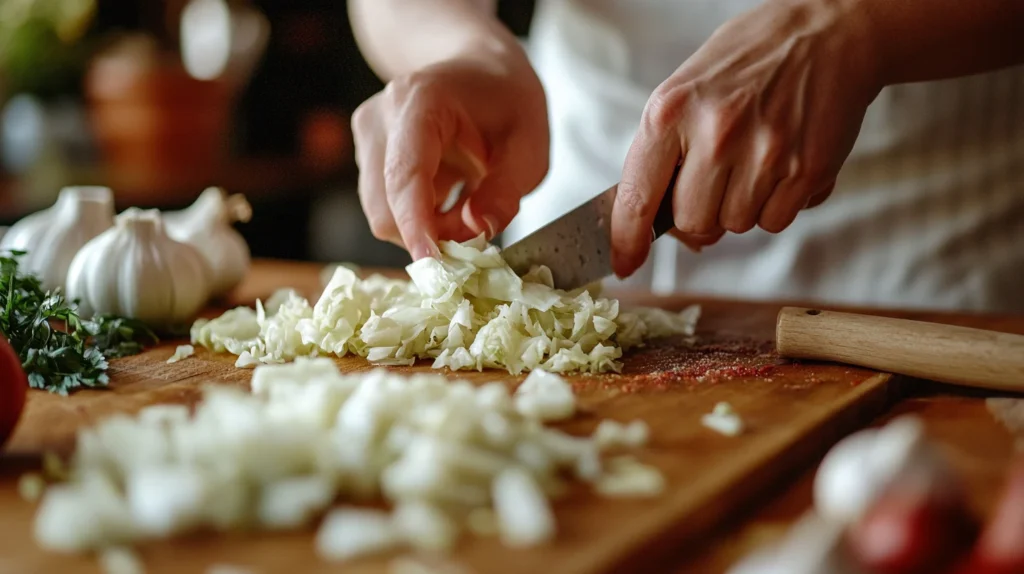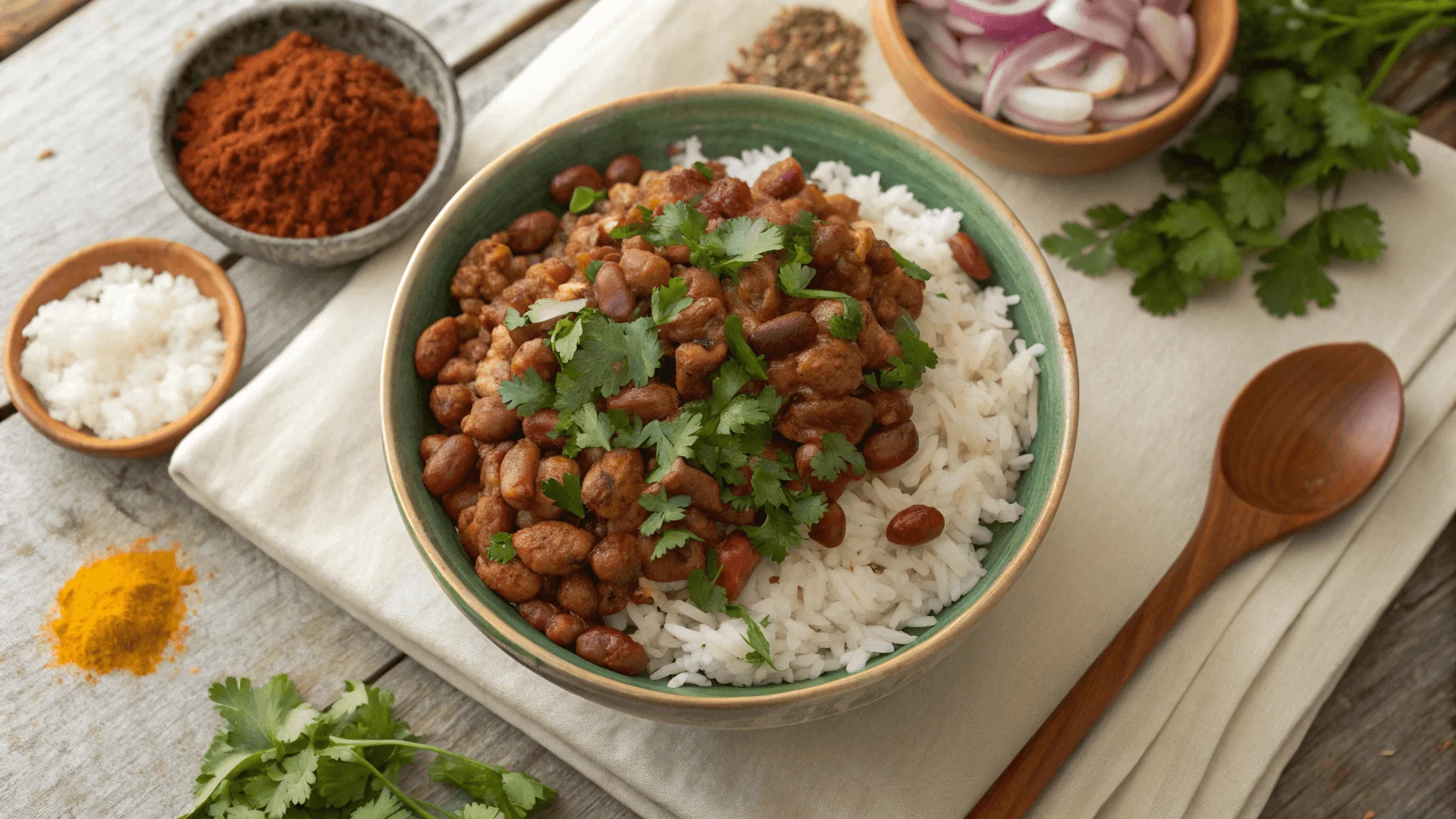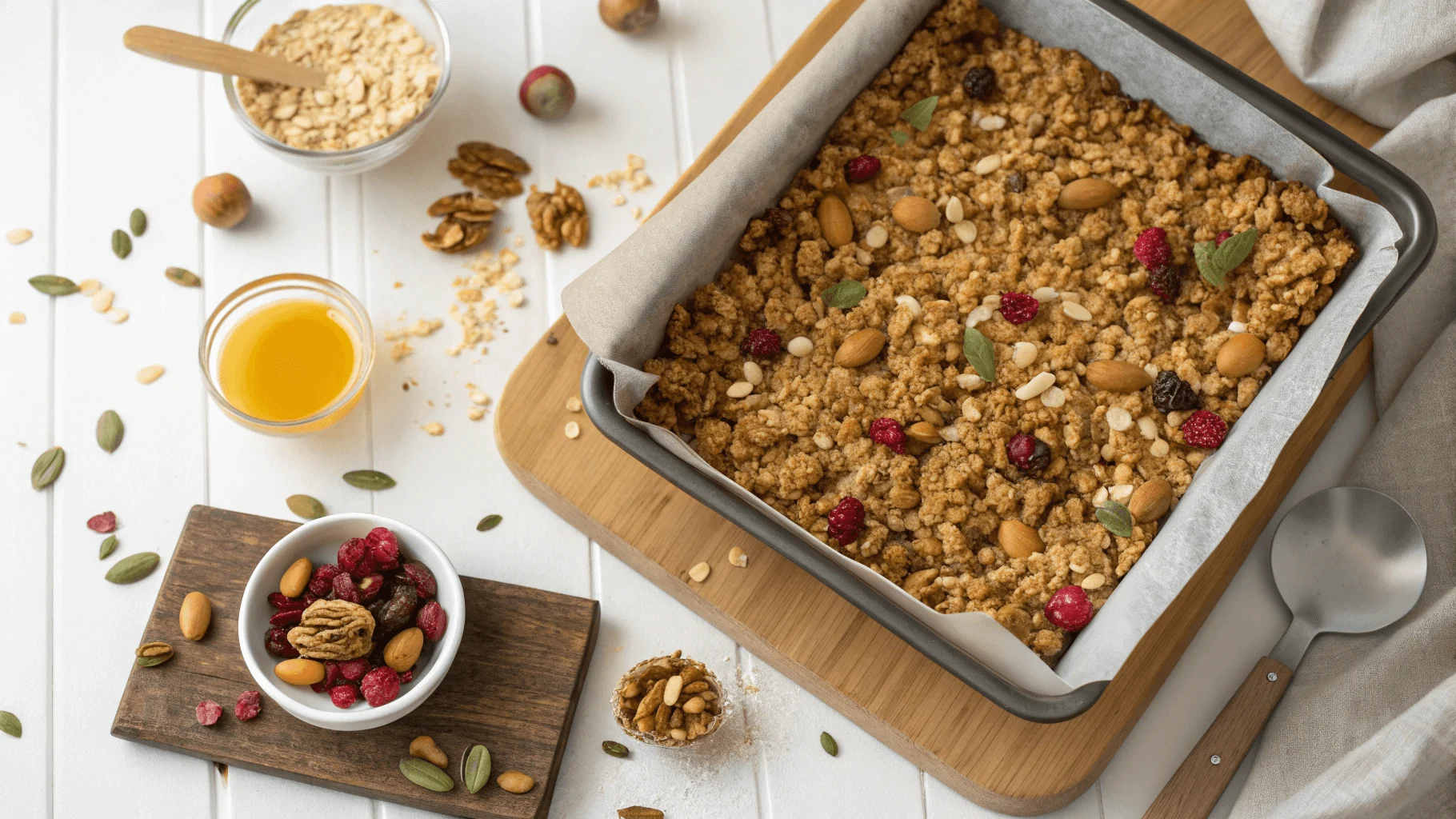When preparing a casserole, how you cut cabbage for a casserole greatly impacts the texture and flavor of your dish. You can incorporate cabbage into casseroles in many different forms due to its versatility. Whether you create a hearty, creamy casserole or a lighter, vegetable-packed dish, cutting the cabbage correctly ensures a well-balanced texture and flavor profile. In this article, we will guide you through everything you need to know about cutting cabbage for casseroles—from selecting the right type of cabbage to perfecting your cutting technique and adding it to your recipes. By the end of this guide, you will have all the tools you need to confidently cut cabbage for casseroles and enhance your cooking experience.
Understanding Cabbage Types for Casseroles
To cut cabbage for a casserole successfully, it’s important to first understand the different types of cabbage and their characteristics. While cabbage is a common ingredient in casseroles, different varieties offer different textures, flavors, and cooking properties. The most popular types used in casseroles include green cabbage, red cabbage, and savoy cabbage. Green cabbage is mild in flavor and holds up well when cooked in casseroles, making it an excellent choice for most recipes. Red cabbage has a slightly more peppery taste and vibrant color, which can add a beautiful aesthetic to your dish. Savoy cabbage, with its tender, crinkled leaves, is perfect for recipes that require a more delicate cabbage texture. Understanding these variations will help you choose the best cabbage type when you set out to cut cabbage for a casserole.
Explore tips for perfectly pairing cabbage with casserole flavors to make your dishes stand out.
Prepping Your Cabbage for Cutting
Before you begin to cut cabbage for a casserole, proper preparation is essential for a smooth and safe cutting process. Start by removing the outer, damaged leaves of the cabbage. These leaves can be tough and have dirt or pesticides on them, so it’s important to discard them. After removing the outer leaves, rinse the cabbage under cool water to remove any residual dirt. Depending on your recipe, you may also need to remove the hard core of the cabbage. The core is tough and doesn’t soften when cooked, so you should remove it before proceeding with cutting. Once you prep and clean the cabbage, you’ll be ready to move on to the next step: cutting the cabbage into the desired shape.
Before cutting, remove any damaged outer leaves and rinse the cabbage thoroughly. This ensures cleanliness and improves the final dish’s taste. Be sure to remove the tough core of the cabbage before slicing, as it can negatively impact the texture of your casserole.
How to Cut Cabbage into Shreds for Casseroles
One of the most common ways to cut cabbage for a casserole is to shred it. Shredded cabbage works well in many casserole recipes, especially those with creamy or cheesy elements. To shred cabbage, begin by cutting the cabbage in half through the core. Then, place each half flat-side down on your cutting board. Use a sharp knife or a mandoline slicer to cut thin slices across the cabbage, creating shreds. Aim for consistent thickness so that the cabbage cooks evenly. If you want finer shreds, you can slice the cabbage even thinner. Shredded cabbage integrates seamlessly with other ingredients for a uniform texture.
Cutting Cabbage into Chunks for Hearty Casseroles
For heartier casseroles that require larger cabbage pieces, cutting the cabbage into chunks can be a great option. To cut cabbage for a casserole into chunks, first cut the cabbage in half, then cut each half into quarters. Remove the core from each quarter, as it is tough and doesn’t break down during cooking. Then, cut the quarters into large chunks, making sure they are of a size that will cook evenly. Chunks of cabbage work especially well in stews or casseroles that cook slowly in the oven, as they maintain their texture and add bulk to the dish. This method also allows the cabbage to absorb the other casserole flavors, enhancing the overall taste of the dish.
Advanced Techniques for Cutting Cabbage
Once you’ve mastered basic cabbage cutting techniques, you can explore more advanced methods for cutting cabbage. These techniques are especially useful when you need precise shapes or sizes for more complex casserole recipes. One such technique is chiffonade, where you roll the cabbage leaves into tight cylinders and slice them into thin ribbons. This method is excellent for dishes that require finely cut cabbage that will blend seamlessly into the casserole. Another advanced method is to cut cabbage into julienne strips, which are longer and thinner than regular shreds. This technique can add a more refined texture to your casserole. By experimenting with these methods, you can elevate the visual appeal and texture of your casserole, making it stand out.
Mistakes to Avoid When Cutting Cabbage
When learning how to cut cabbage for a casserole, there are a few common mistakes that can hinder your results. One mistake is not removing the core properly. The core of the cabbage is tough and can affect the texture of your casserole if left in large pieces. Another common mistake is uneven cutting. If the cabbage pieces are too large or too small, they may cook unevenly, affecting the final result of your casserole. It’s also important to avoid using a dull knife, as this can cause the cabbage to tear or bruise rather than cut cleanly. Using the right knife and cutting technique will ensure that your cabbage is prepared properly and enhances the overall dish.
How to Store Cut Cabbage for Freshness
Proper storage of cut cabbage is essential to maintaining its freshness, especially if you plan to cut cabbage for a casserole in advance. Once you’ve cut your cabbage, store it in an airtight container or resealable plastic bag to prevent it from drying out. Keep the cabbage in the refrigerator, where it will stay fresh for up to 2-3 days. For longer storage, you can freeze cut cabbage. To freeze cabbage, blanch the cut pieces by boiling them briefly in water and then plunging them into ice water. Once cooled, store the cabbage in freezer bags. Proper storage techniques ensure that your cut cabbage stays fresh and ready for use in your casserole recipe.
Incorporating Cabbage into Your Casserole
Knowing how to cut cabbage for a casserole is just one step in the process. Once your cabbage is cut, the next step is incorporating it into your casserole. Whether you’re layering the cabbage with other vegetables, meats, or sauces, it’s essential to consider the cooking times of each ingredient. Cabbage can cook down significantly, so be mindful of how much you add to the casserole. If you’re looking to add texture and crunch, it’s best to add the cabbage towards the end of the cooking process. For a softer, more integrated texture, mix it in earlier. Cabbage pairs well with a variety of flavors, including cheese, garlic, and onions, and can add both taste and nutrition to your casserole.
Tools and Gadgets to Simplify Cabbage Cutting
While it’s entirely possible to cut cabbage for a casserole with just a knife, there are several tools and gadgets available that can make the job easier and faster. Mandoline slicers are a popular choice for achieving even, thin slices of cabbage quickly. If you need finely shredded cabbage, a food processor with a shredding attachment can save you time and effort. Additionally, cabbage corers are handy tools that allow you to remove the tough core with ease. Investing in these tools can help you achieve the perfect cabbage for your casserole recipes, while also reducing the time spent preparing your ingredients.
Recipes That Benefit from Perfectly Cut Cabbage
Certain casserole recipes benefit greatly from perfectly cut cabbage. Dishes like cabbage and noodle casseroles or cabbage and beef bakes rely on the cabbage’s texture to balance the other ingredients. Shredded cabbage works well in casseroles that have a lot of sauce or cheese, as it absorbs the flavors and softens during cooking. On the other hand, chunkier pieces of cabbage are ideal for casseroles that feature a heartier, more robust filling. By cutting your cabbage to suit the specific recipe, you can ensure that the texture and flavor of your casserole are perfectly balanced.
Health Benefits of Including Cabbage in Casseroles
Adding cabbage to your casserole not only improves the dish’s flavor but also provides numerous health benefits. Cabbage is a low-calorie vegetable rich in vitamins, fiber, and antioxidants. It’s a great source of vitamin C, which supports immune health, and it also contains compounds that may help reduce inflammation and promote digestion. By including cabbage in your casserole, you’re adding a nutritious element to your meal, making it both delicious and health-conscious.
Cleaning Up After Cutting Cabbage
Cleaning up after you cut cabbage for a casserole can sometimes be a hassle, especially if you’ve used a large cutting board or knife. To make the cleanup process easier, be sure to wipe down your cutting board and knife immediately after use. Cabbage leaves can leave a sticky residue, so washing with hot, soapy water is the best way to prevent any buildup. Additionally, if you’ve
used a mandoline slicer or food processor, be sure to clean these tools thoroughly to avoid any lingering vegetable bits.
Troubleshooting Cabbage Cutting Challenges
Even with the right technique, cutting cabbage for a casserole can present challenges. One common issue is that the cabbage may bruise or tear when cutting. To avoid this, ensure that your knife is sharp and that you’re using smooth, controlled cuts. Another challenge is cutting cabbage evenly, which can lead to uneven cooking. If you find that your pieces are not uniform, consider using a mandoline slicer for more precise cuts. With the right tools and techniques, you can overcome these challenges and ensure that your cabbage is perfectly prepared for your casserole.
Choosing the Right Cabbage for Your Casserole Recipe
Choosing the right cabbage type is essential when learning how to cut cabbage for a casserole. Each type of cabbage—green, red, and savoy—offers unique characteristics that may make one more suitable than another depending on your recipe. Green cabbage is the most versatile and commonly used, but red cabbage can provide a unique color contrast and a slightly peppery flavor. Savoy cabbage, with its tender leaves, works well in dishes that require a delicate texture. By understanding these options, you can select the best cabbage variety for your casserole, enhancing the overall taste and texture.
Seasonal Tips for Buying Fresh Cabbage
When buying cabbage to cut for a casserole, it’s important to choose fresh, in-season cabbage. The best time to buy cabbage is typically in the fall and winter months when it’s at its peak. When selecting cabbage, look for heads that are firm and heavy for their size, with tightly packed leaves. Avoid cabbage with wilting or yellowing leaves, as these may indicate that the cabbage is past its prime. Buying cabbage in-season ensures that you get the best flavor and texture for your casserole.
How Cutting Techniques Affect Cooking Times
The way you cut cabbage for a casserole can significantly affect the cooking times of your dish. Smaller, shredded cabbage will cook faster than large chunks, which may take longer to soften. If you want your cabbage to cook quickly and integrate seamlessly with other casserole ingredients, opt for smaller cuts. Larger pieces of cabbage, while heartier and more substantial, will need more time in the oven. By adjusting your cutting technique based on the desired cooking time, you can better control the overall texture of your casserole.
Enhancing Casserole Texture with Properly Cut Cabbage
Properly cut cabbage can enhance the texture of your casserole, making it either tender and soft or hearty and chunky, depending on the cut. Shredded cabbage will soften quickly, blending well with other ingredients and creating a smooth consistency. On the other hand, chunkier cabbage retains its bite, adding more substance and texture to the dish. Experimenting with different cutting techniques allows you to customize the texture of your casserole, ensuring it meets your preferences and the needs of your recipe.
FAQs
- Can I prepare cabbage ahead of time for a casserole? Yes, you can cut cabbage in advance and store it in the fridge for up to 2-3 days. Just be sure to keep it in an airtight container.
- What’s the best way to cut cabbage for a casserole? The best cutting method depends on your recipe. Shredded cabbage is great for quick-cooking casseroles, while chunkier cuts are better for heartier dishes.
- How can I keep cabbage from wilting after cutting? Store cut cabbage in an airtight container in the fridge to maintain its freshness.
Conclusion
Knowing how to cut cabbage for a casserole is an important skill that can significantly impact the outcome of your dish. By selecting the right cabbage type, using proper cutting techniques, and incorporating the cabbage into your casserole thoughtfully, you can ensure a perfect result every time. From understanding different cabbage types to troubleshooting common cutting challenges, this guide has covered all the essentials. With these tips in mind, you’ll be able to confidently prepare cabbage for any casserole recipe, adding both flavor and texture to your meal.






2 thoughts on “How to Cut Cabbage for a Casserole: A Complete Guide”